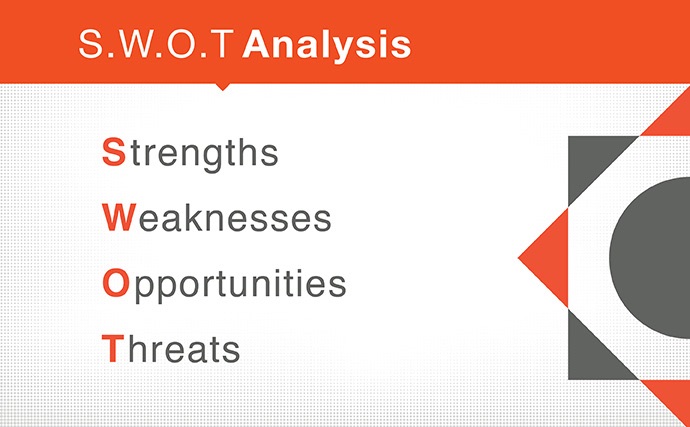How your business can benefit from better goal setting
Where do you want your business to be a month from now? What about five years from now? What new markets do you want to tap into and what will that look like? Questions like these are the focus of many successful business owners. Whether you realize it or not, you're constantly setting goals - some big, others small - for your business to reach.
When it comes to setting goals, you've probably heard of the S.W.O.T. analysis (assessing your Strengths, Weaknesses, Opportunities, and Threats) and the S.M.A.R.T. method (setting goals that are Specific, Measurable, Attainable, Realistic, and Timely). When these approaches are applied and followed through on, they are highly effective ways to reach goals in every aspect of life.
So how can you apply these approaches to setting financial goals for your business?

- Establish attainable goals and prioritize for efficiency – The S.M.A.R.T. method is a formulaic process of defining goals to ensure that your objectives and key performance indicators (KPIs) are attainable within a specified timeframe. As an example, apply this method when considering this goal: To build brand awareness.
- Specific goal established to increase brand awareness.
- Performance measured by brand impressions (e.g. social media or paid media impressions), share of voice, website traffic, brand mentions, search volume, and brand health
- Results to be achieved by developing an advertising campaign with integrated channels such as paid media (e.g. print ads, online display, video and mobile advertising) in partnership with industry publications to reach new audiences, search engine marketing to reach audiences with intent based on relevant keywords, and a content marketing program on social media to engage current and prospective customers with value-based, customer testimonial videos
- Message will be relevant for the audience segments because the strategic campaign will deliver the brand promise and benefits in a creative and simple way by leveraging the power of influence via customer testimonials to drive engagement
- Timing defined by the length of the marketing campaign from Q2 to Q4
With this example of applying the S.M.A.R.T method to marketing, we hope you gain a deeper understanding of this goal setting in a strategic, thoughtful, and meaningful way.
For more information, watch this Episode 18 of Sharing Knowledge to learn more about earning the attention your business deserves as well as the importance of aligning sales and marketing, prioritizing marketing budgets, and the role that marketing plays in helping your business succeed in reaching its goals.
- Set and stick to a budget - This advice is nothing new, but it can't be stressed enough. Setting a budget to ensure that you're both aware of each of your expenses and that you're not spending more than you can afford. A budget will demonstrate how it's not just your big investments that cost you, but also the smaller purchases that can add up quickly. In addition to keeping your expenses in check, the process of keeping a detailed, regularly updated budget will serve as an effective guide for making future financial decisions and setting attainable goals.
- Celebrate milestones - Setting goals always comes with the possibility of falling short and ending up disappointed. That's why it's important to deliberately set milestone achievements that you'll reach - and celebrate - on your way to a bigger goal. These could include increasing cash flow by a certain amount over a given time period, attracting a certain amount of new customers, or promoting deserving employees. Setting and celebrating milestone achievements can help you and your team enjoy and appreciate the journey of reaching your biggest goals as a business.
- Allow for flexibility - Every goal should be set with the understanding that there are always factors outside of your control. Inflation, rising interest rates, fears of a recession, supply chain issues, and so on. Keeping this reality in mind and giving yourself the space to adjust the timing, expectations, or specifics of your goals as issues arise is essential to navigating the ups and downs that inevitably come with being a business owner.
- Buy into your goals - A business goal shouldn't just be rattling around in your head. Be intentional about bringing together all relevant employees and trusted advisors to ensure everyone is aware of the goals you're setting and how you're planning to achieve them. Considering any feedback or creative friction from your team is a great way to have everyone on the same page and enthusiastic about the goals you're setting. Clearly identify and spell out these goals and create a plan to measure and track progress on a regular basis. Goal setting won't be effective without assessing progress and holding yourself accountable to deliverables.
- Monitor and optimize - The journey extends beyond establishing goals and implementing tactics to reach desired milestones, your business must relentlessly track and monitor metrics in order to translate data into information that can guide future business decisions and calibrate your initiatives and programs to reach greater heights
Goals are a great way to sustain and expand upon the success of your business. But not all goals are created the same, and they're only as effective as you make them. Implementing these approaches might be just what your team needs to reach the level of success your business is capable of achieving.



